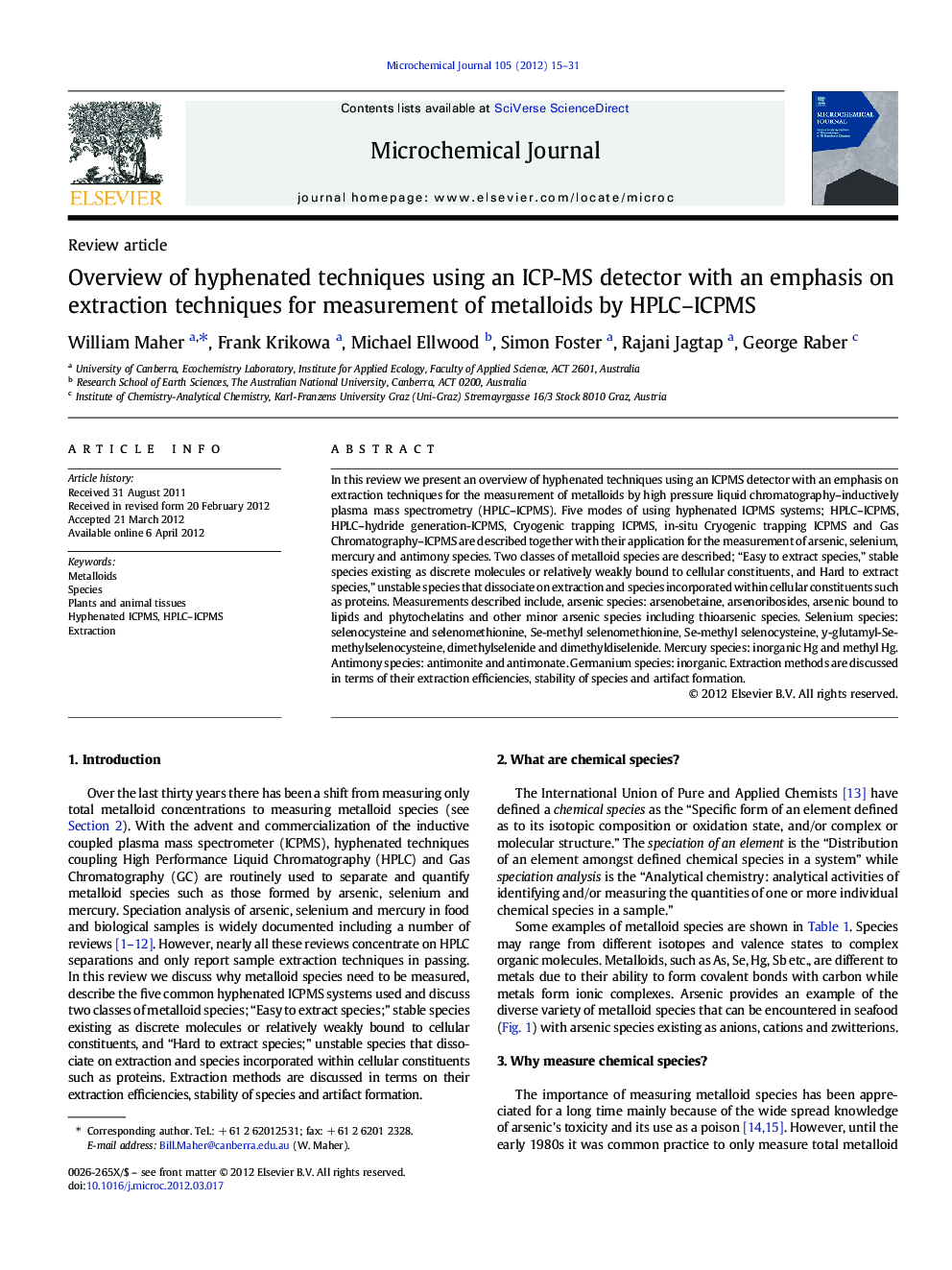| کد مقاله | کد نشریه | سال انتشار | مقاله انگلیسی | نسخه تمام متن |
|---|---|---|---|---|
| 1227887 | 1494889 | 2012 | 17 صفحه PDF | دانلود رایگان |

In this review we present an overview of hyphenated techniques using an ICPMS detector with an emphasis on extraction techniques for the measurement of metalloids by high pressure liquid chromatography–inductively plasma mass spectrometry (HPLC–ICPMS). Five modes of using hyphenated ICPMS systems; HPLC–ICPMS, HPLC–hydride generation-ICPMS, Cryogenic trapping ICPMS, in-situ Cryogenic trapping ICPMS and Gas Chromatography–ICPMS are described together with their application for the measurement of arsenic, selenium, mercury and antimony species. Two classes of metalloid species are described; “Easy to extract species,” stable species existing as discrete molecules or relatively weakly bound to cellular constituents, and Hard to extract species,” unstable species that dissociate on extraction and species incorporated within cellular constituents such as proteins. Measurements described include, arsenic species: arsenobetaine, arsenoribosides, arsenic bound to lipids and phytochelatins and other minor arsenic species including thioarsenic species. Selenium species: selenocysteine and selenomethionine, Se-methyl selenomethionine, Se-methyl selenocysteine, y-glutamyl-Se-methylselenocysteine, dimethylselenide and dimethyldiselenide. Mercury species: inorganic Hg and methyl Hg. Antimony species: antimonite and antimonate. Germanium species: inorganic. Extraction methods are discussed in terms of their extraction efficiencies, stability of species and artifact formation.
► Five modes of using hyphenated ICPMS systems are described.
► Extraction of species is reviewed in terms of their extraction efficiencies, stability of species and artifact formation.
► Easy to extract species are identified as species existing as discrete molecules or weakly bound to cellular constituents.
► Hard to extract species are identified as species that dissociate or incorporated within cellular constituents e.g. proteins.
Journal: Microchemical Journal - Volume 105, November 2012, Pages 15–31